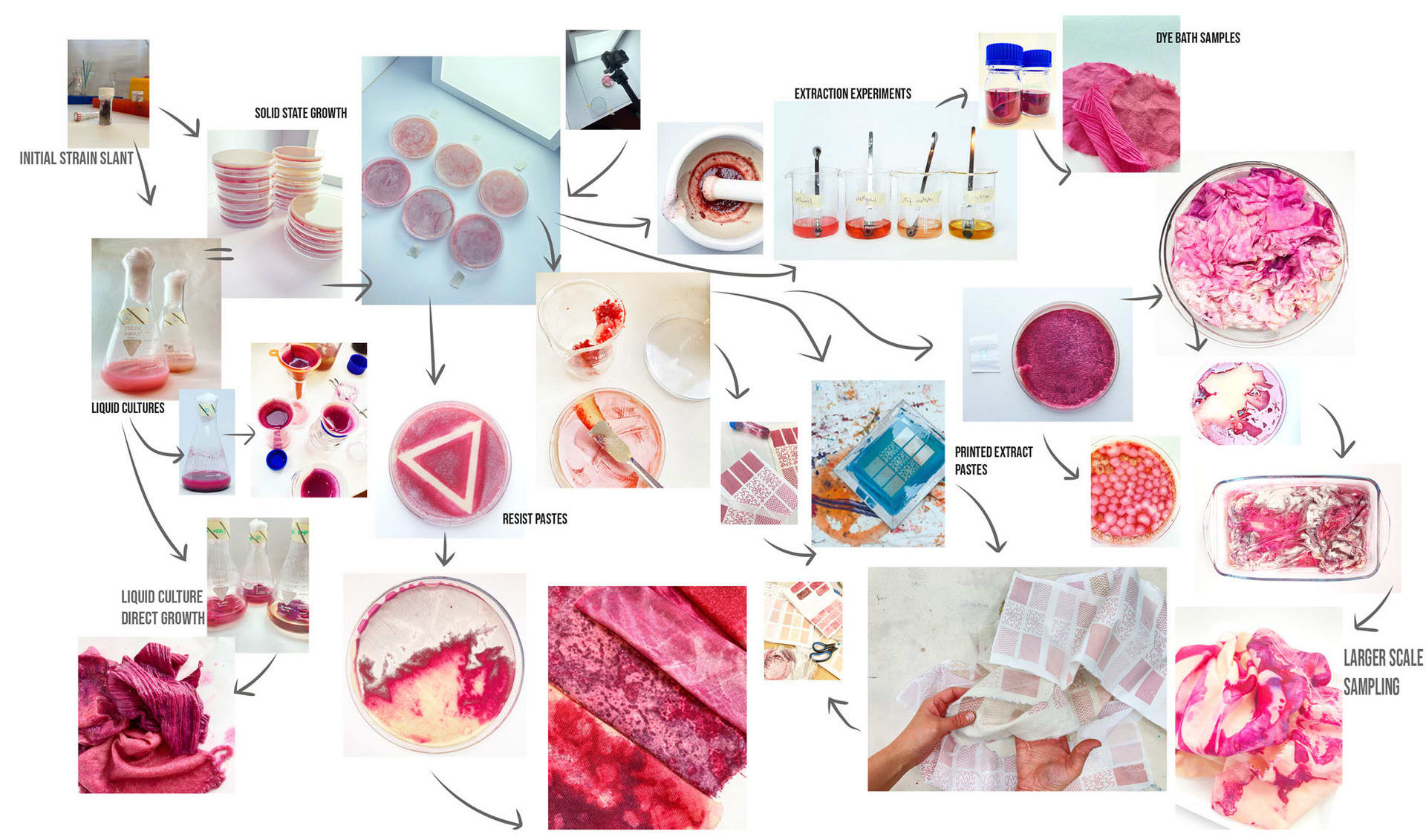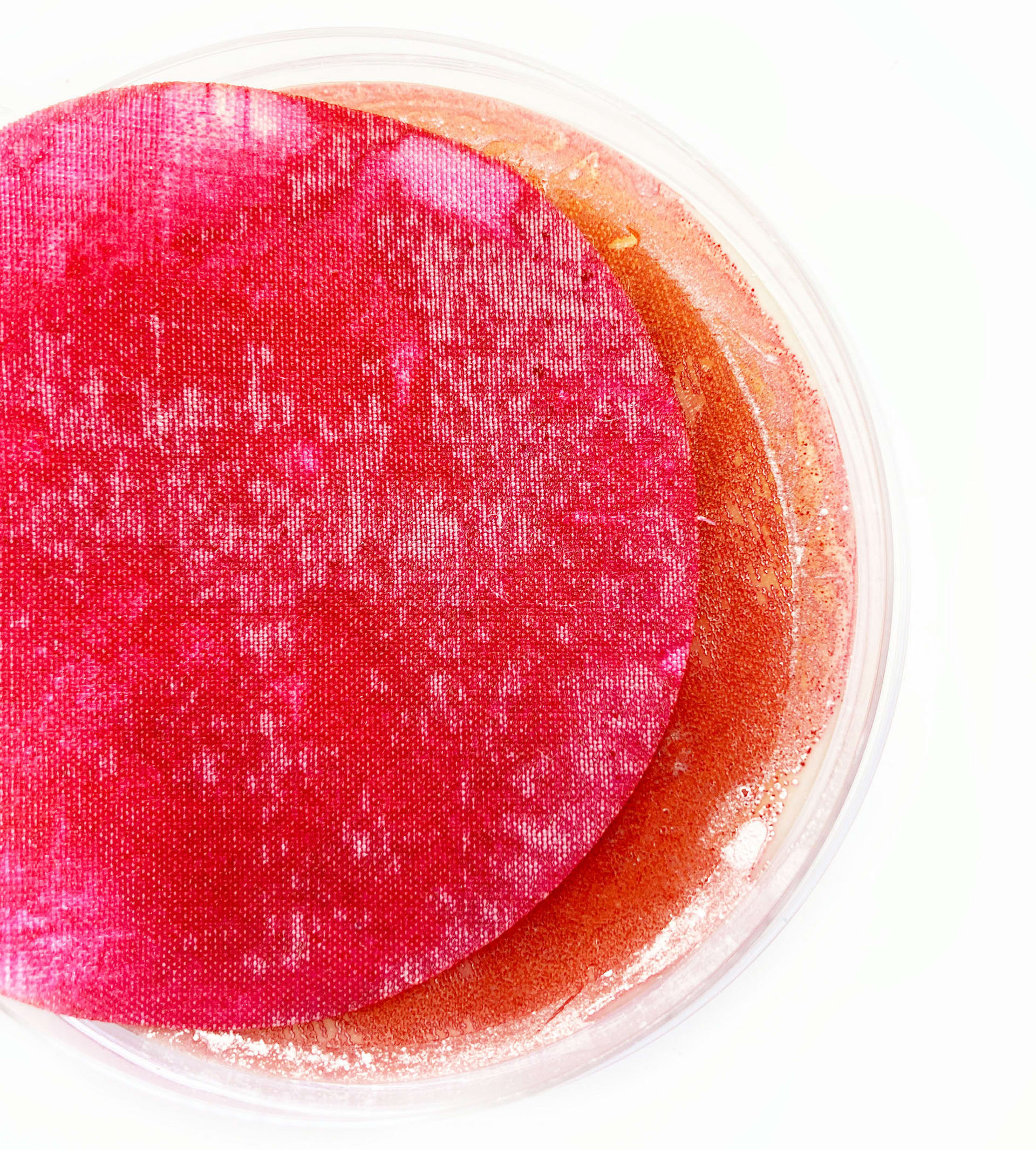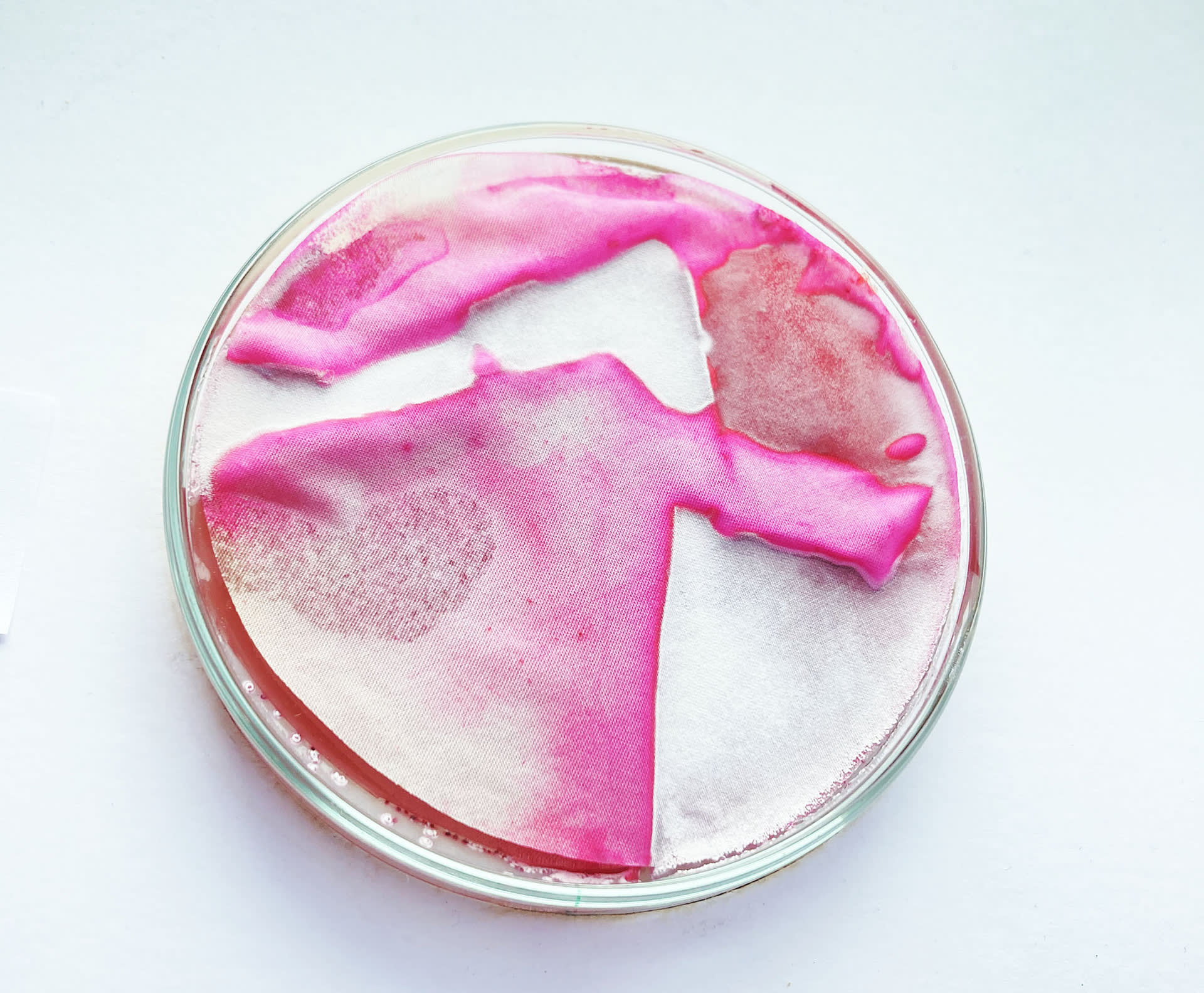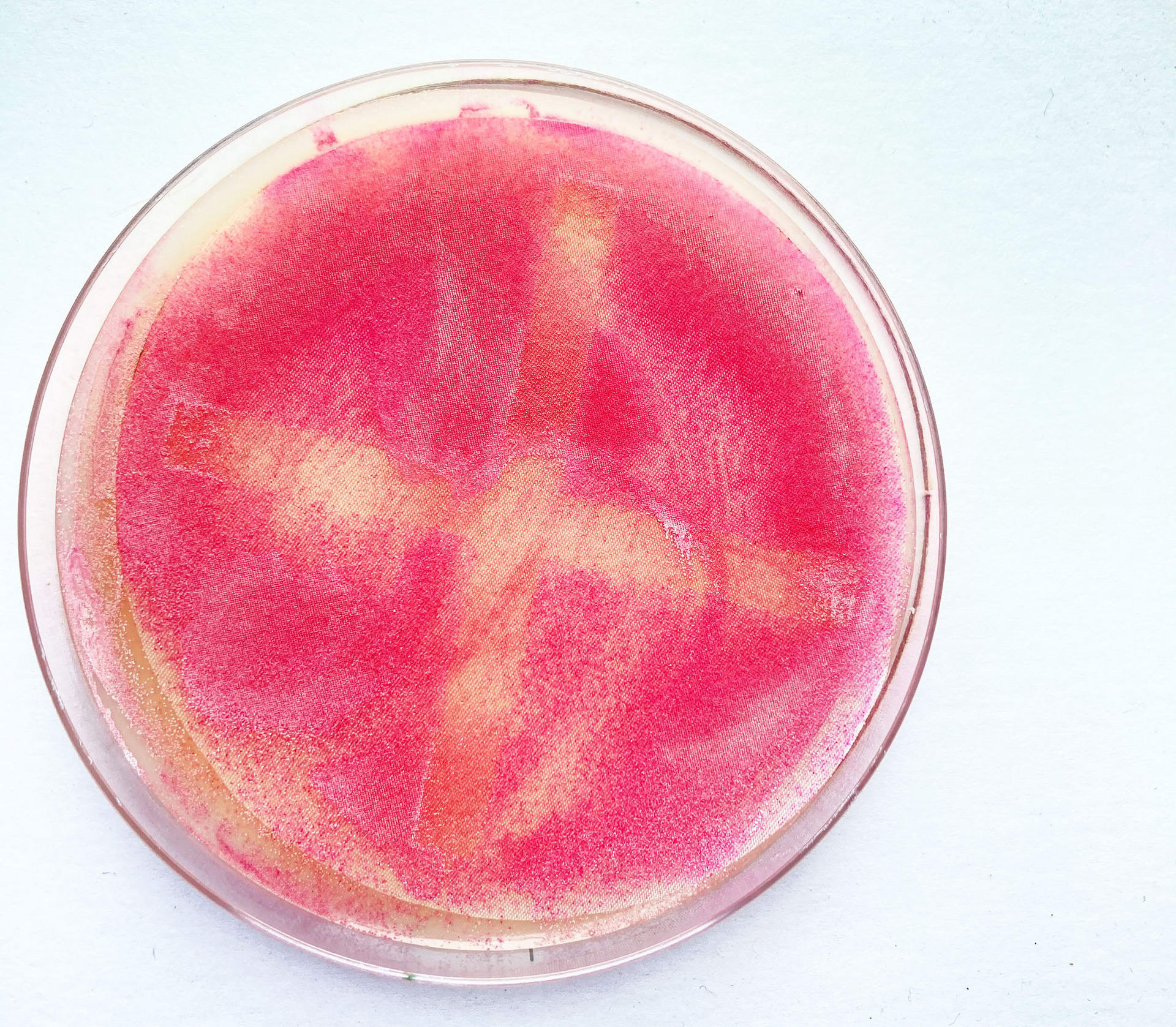Ruth is a London based design researcher, exploring sustainable, circular and regenerative systems of colour.
Throughout her Textiles MA she has developed practice-based research focused on the creative potential of microbial pigments, investigating how these living colour systems present solutions and replacements to the global reliance on toxic petroleum-based colour and dye systems.
Ruth engages with design education, research & development and industry partners within the context of Future Systems.
The journey continues as Ruth embarks on a PhD at the Living Systems Research Lab at Central Saint Martins, London in September; and takes part in the first Creative Residency at Colorifix, a UK based start up working to develop and commercialize bacterial dyes, where she will further explore the capacity of colour producing microorganisms to create human designed patterns.
With thanks to the John Innes Centre for Research & the Truman Lab.










